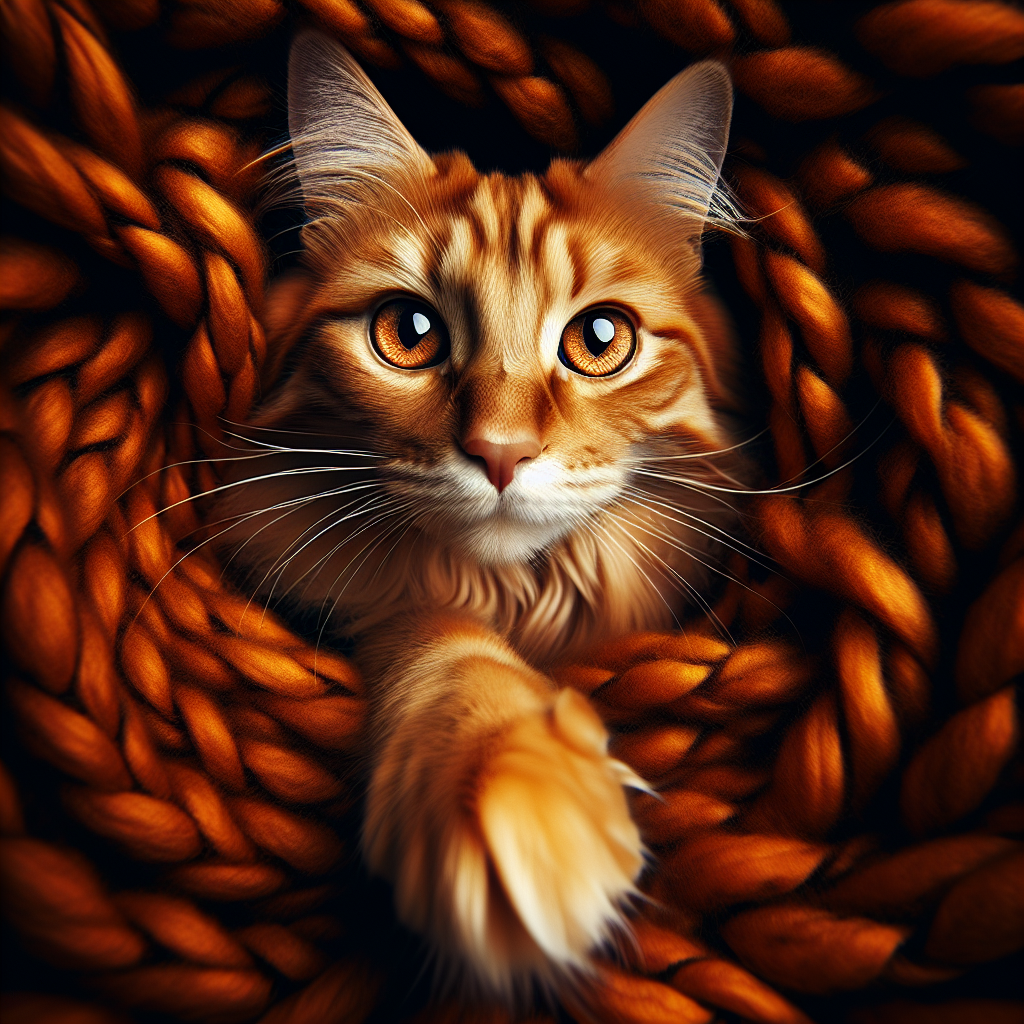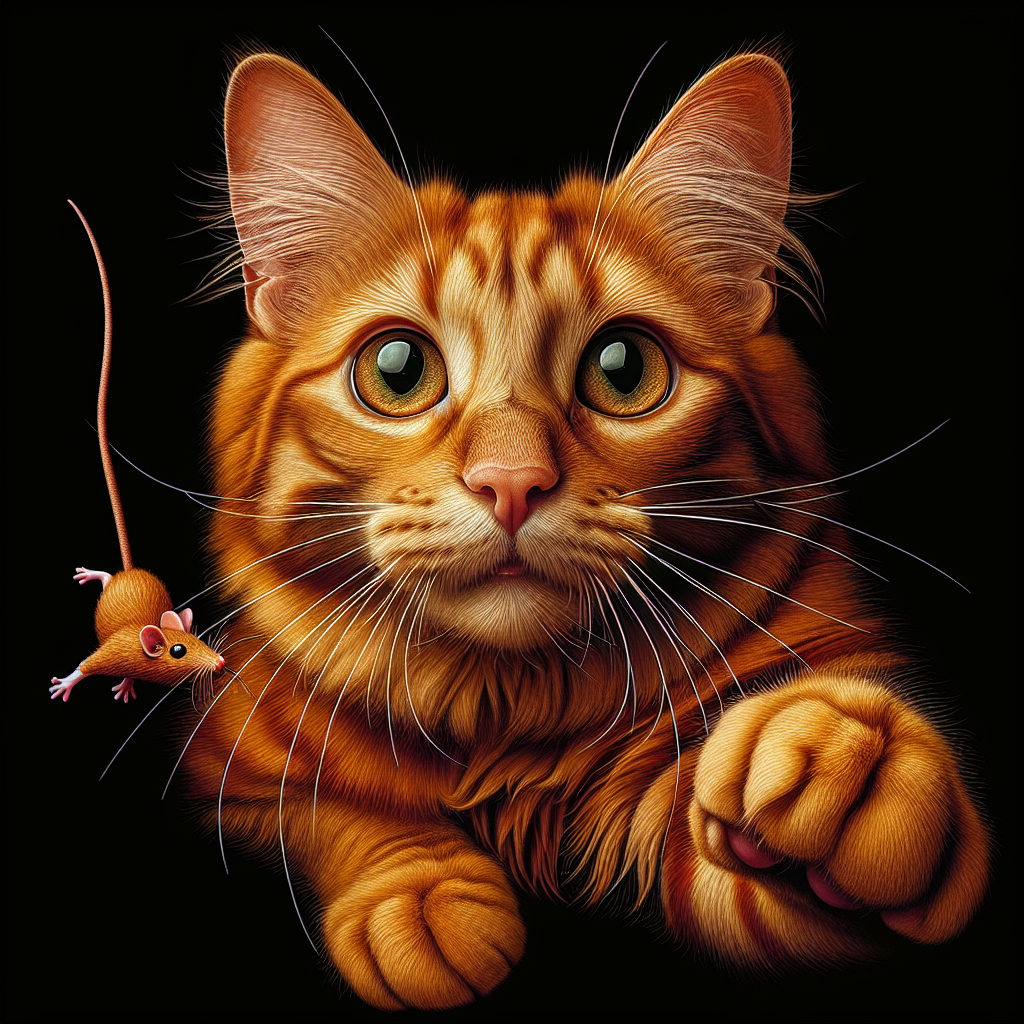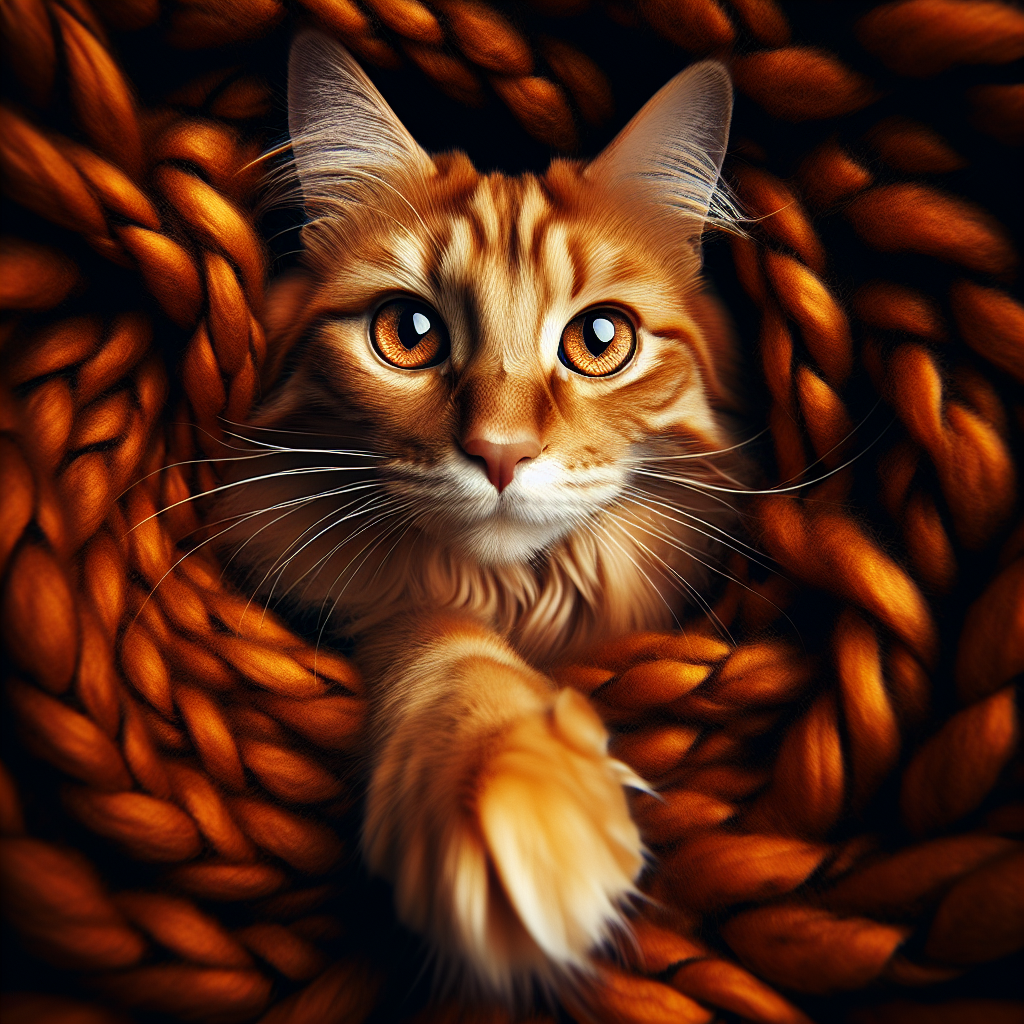So, you’ve got yourself an orange tabby cat and you can’t help but wonder, what breed is this adorable feline companion of yours? Well, fret not, because in this article, we will explore the various factors that can help you identify the breed of your beloved orange tabby cat. From physical characteristics to personality traits, we’ll guide you through the process of uncovering the mysterious origins of your four-legged friend. Get ready to become a feline detective and discover the unique breed that makes your orange tabby cat so special!
Physical features of an orange tabby cat
Coat color and pattern
One of the most distinctive features of an orange tabby cat is its coat color and pattern. Orange tabbies have a beautiful, vibrant reddish-orange coat with darker stripes or swirls known as tabby markings. These markings can vary in intensity and can be found on their bodies, legs, and tails. Some orange tabbies may also have white patches or spots on their chests or bellies, adding to their unique appearance.
Eye color
Orange tabbies usually have stunning, bright eyes that match their coat color. The most common eye color for orange tabbies is a vibrant golden hue. However, it is important to note that eye color can vary even within the same breed, so not all orange tabbies will have golden eyes. Some may have amber, green, or even blue eyes.
Body type
Orange tabby cats come in various body types, depending on their breed. Generally, they have a muscular build with a medium to large frame. Their bodies are well-proportioned, with strong bone structure and a sturdy appearance. However, it is important to note that different cat breeds can have slightly different body types, so the body shape of an orange tabby cat may vary depending on its breed.
Facial features
Orange tabby cats have striking facial features that add to their overall charm. They typically have a broad, round face with full cheeks and a well-defined muzzle. Their whiskers are long and often contrast with their vibrant coat color. The ears of orange tabbies are usually medium in size, set slightly apart, and have rounded tips. These unique facial features contribute to the distinctive and lovable appearance of orange tabby cats.
Common breeds associated with orange tabby cats
American Shorthair
The American Shorthair is one of the most popular cat breeds associated with orange tabby cats. These cats have a robust build, a broad head, and a round face. American Shorthairs are known for their friendly and easygoing nature, making them great companions.
British Shorthair
The British Shorthair is another breed commonly seen with orange tabby markings. These cats have a dense, plush coat and a powerful body. They have a distinctive round face, large round eyes, and a stocky build. British Shorthairs are known for their calm and independent nature.
Maine Coon
The Maine Coon breed is known for its large size and impressive physical presence. Orange tabby Maine Coons are particularly striking with their sturdy bodies and long, tufted tails. They have a square-shaped head, high cheekbones, and large, expressive eyes. Maine Coons are friendly, intelligent, and sociable cats.
Norwegian Forest Cat
Orange tabby Norwegian Forest Cats are known for their luxurious, long coats and bushy tails. They have a triangular-shaped head with a straight profile and almond-shaped, expressive eyes. Norwegian Forest Cats are known for their playful and affectionate nature, making them wonderful companions.
Egyptian Mau
The Egyptian Mau breed is known for its elegance and grace. Orange tabby Egyptian Maus have a short, smooth coat with distinct tabby markings. They have a moderate body type with sleek muscles, a wedge-shaped head, and large, almond-shaped eyes. Egyptian Maus are intelligent, active cats with a friendly and loyal disposition.

Genetic factors that determine a cat’s coat color
Agouti gene
The Agouti gene plays a crucial role in determining the tabby pattern seen in orange tabby cats. This gene controls how pigment is distributed in the hair shaft, resulting in the characteristic striped or swirled tabby markings.
Red gene
The Red gene is responsible for the orange coat color seen in orange tabbies. This gene determines whether a cat’s coat will be red or black. When the Red gene is present, it produces a warm orange hue, giving rise to the beautiful coat color of orange tabbies.
Tabby gene
The Tabby gene is responsible for the specific tabby markings seen on an orange tabby cat’s coat. This gene controls the distribution and intensity of stripes, swirls, and spots, creating the unique and eye-catching patterns that make tabbies so distinct.
White spotting gene
The White spotting gene can determine if an orange tabby cat will have any white patches or spots on its coat. This gene controls the expression of white coloration, resulting in varying degrees of white markings on the cat’s body.
Identifying breed characteristics in your orange tabby cat
Coat texture and length
Observe the texture and length of your orange tabby cat’s coat. Some breeds have specific coat textures and lengths that can help identify their breed. For example, Maine Coon cats have long, shaggy coats, while British Shorthairs have dense and plush coats.
Distinctive markings or patterns
Examine the tabby markings on your orange tabby cat’s coat. Different breeds may have specific types or patterns of tabby markings. Pay attention to the shape, size, and arrangement of the stripes or swirls on their fur, as it can help narrow down the potential breeds.
Body size and shape
Take note of your orange tabby cat’s body size and shape. Different breeds have distinct body types, ranging from muscular and large builds to more compact or slender frames. Comparing your cat’s body characteristics to those of known breeds can provide insights into their potential breed.

Temperament and behavior traits of orange tabby cats
Playfulness and energy levels
Orange tabby cats are known for their playful and energetic nature. They often display a high level of enthusiasm during playtime and can engage in interactive games for extended periods. Their lively and active personalities make them entertaining companions.
Sociability and friendliness
Orange tabbies are generally known for their friendly and sociable nature. They tend to enjoy human company and often form strong bonds with their owners. These cats are usually approachable, outgoing, and may even exhibit a lap cat behavior, seeking physical affection from their human companions.
Intelligence and trainability
Orange tabby cats are often described as highly intelligent and trainable. They are quick to learn, making them responsive to training techniques and interactive toys. With patience and positive reinforcement, orange tabbies can be taught tricks or even participate in agility training.
Seeking professional assistance to identify your cat’s breed
Consulting a veterinarian
If you’re unsure about your orange tabby cat’s breed, consider consulting a veterinarian. Veterinarians have extensive knowledge about various cat breeds and can provide valuable insights based on their expertise. They may be able to identify specific breed characteristics or refer you to a cat breed specialist.
Contacting a cat breed specialist
Cat breed specialists are experts in feline genetics and breed standards. They can evaluate your orange tabby cat’s physical traits and compare them to specific breed standards to determine its likely breed. These specialists have a deep understanding of breed characteristics and can provide detailed information about your cat’s lineage.
Visual similarities between different cat breeds and orange tabbies
Distinguishing features of orange tabbies
Orange tabbies have several distinguishing features that can help differentiate them from other cat breeds. These include their vibrant reddish-orange coat color, distinctive tabby markings, and commonly associated eye colors, such as golden or amber. These unique visual traits are key identifiers of an orange tabby cat.
Potential confusion with other breeds
In some cases, there may be visual similarities between certain cat breeds and orange tabbies. This can make it challenging to determine the exact breed of an orange tabby cat solely based on physical appearance. However, by closely examining other characteristics such as body type, facial features, and temperament, it is possible to distinguish between breeds and identify any potential mixed heritage in your cat.
Consideration of the cat’s ancestry and lineage
Pedigree documentation
If you have access to your orange tabby cat’s pedigree documentation, it can provide valuable information about its breed. Pedigree documentation contains records of the cat’s lineage, including the breeds of its parents and ancestors. By studying the pedigree, you can gain insights into the potential breed composition of your cat.
Possible mixed breed heritage
It’s important to note that many orange tabby cats have mixed breed heritage. This can result in a combination of physical traits and characteristics from various breeds, making it challenging to pinpoint a single breed. Mixed breed cats offer a unique blend of traits and personalities, making them wonderful and diverse companions.
Understanding the limitations of breed identification for mixed breed cats
Unpredictable traits and appearances
Mixed breed cats often exhibit unpredictable traits and appearances as they inherit genetic influences from multiple breeds. This can make it challenging to accurately determine their breed composition based solely on physical characteristics. It’s essential to consider their individual personalities and characteristics rather than focusing solely on breed identification.
Benefitting from genetic testing
Genetic testing can provide valuable insights into the breed composition of a mixed breed cat. By analyzing the cat’s DNA, genetic testing can reveal the presence of specific breed markers and provide an estimation of the cat’s breed heritage. This can be particularly helpful for mixed breed cats with uncertain lineage or for cat owners who are curious about their cat’s genetic makeup.
Making an informed guess about your orange tabby’s breed
Comparing physical traits to breed standards
Comparing your orange tabby cat’s physical traits to breed standards can provide clues about its potential breed. Take note of characteristics such as body type, coat texture, distinctive markings, and eye color. While these traits may not definitively determine the breed, they can help narrow down the possibilities and provide insights into your cat’s ancestry.
Obtaining insights from experienced cat owners
Reaching out to experienced cat owners or joining online forums and communities can be a valuable resource for gaining insights into your orange tabby’s breed. Experienced cat owners may have encountered similar cats or have knowledge about breed-specific traits. They can provide suggestions, opinions, and shared experiences that may help in identifying potential breeds in your orange tabby cat.
Remember, regardless of their breed, orange tabby cats are cherished for their unique and lovable qualities. Whether your orange tabby cat comes from a known breed lineage or is a wonderful blend of various breeds, they will always bring joy, playfulness, and companionship to your life.

